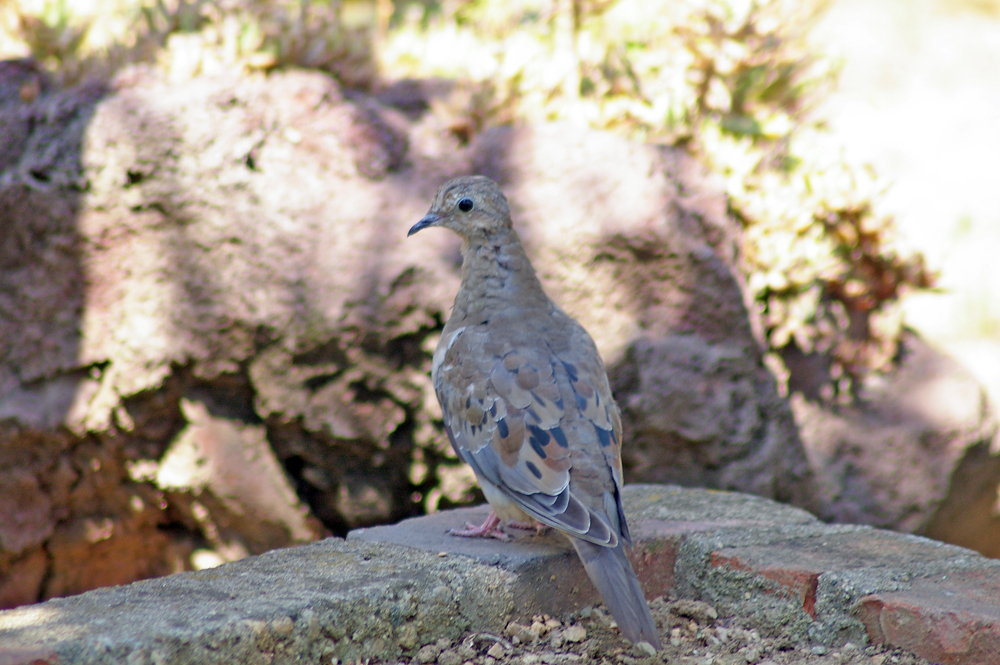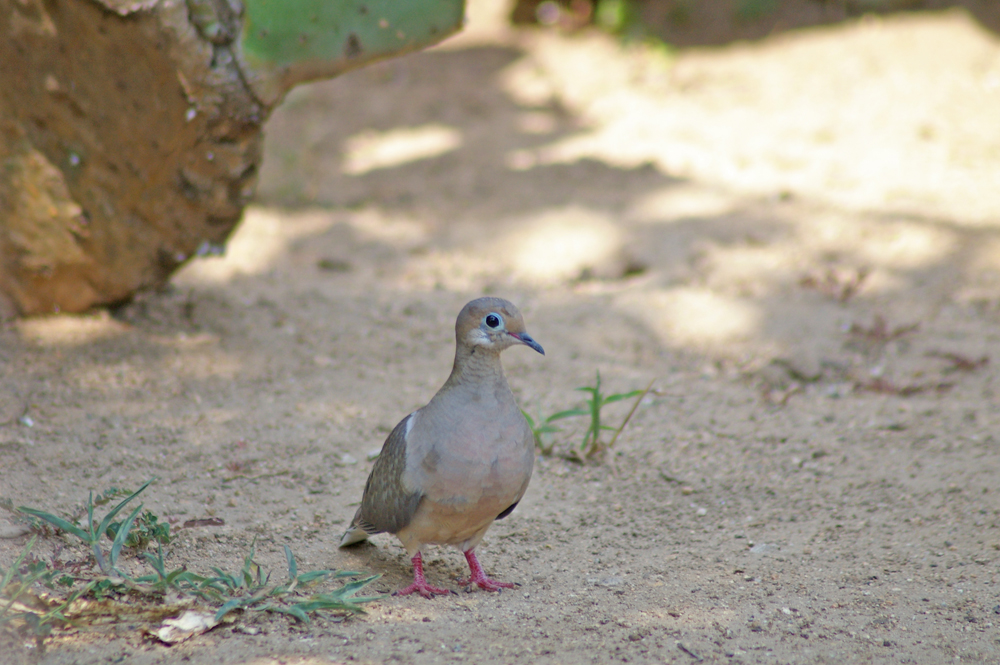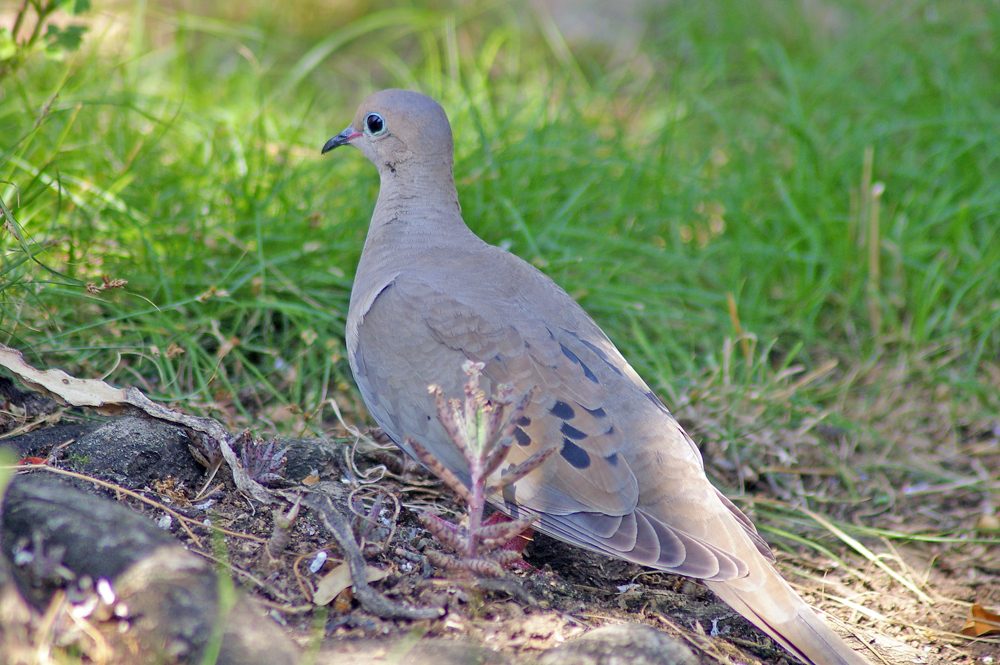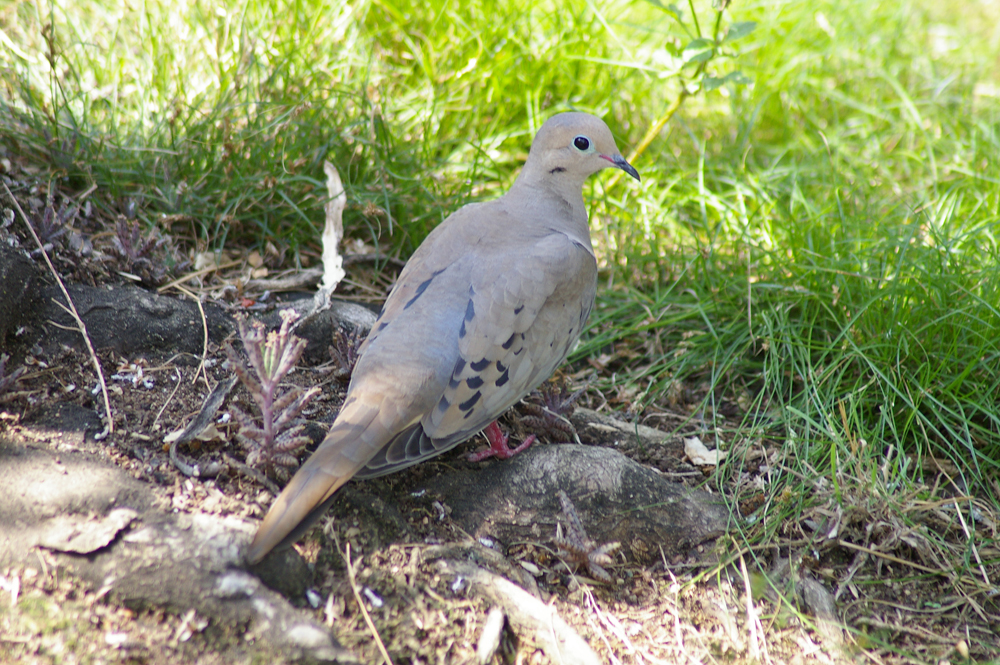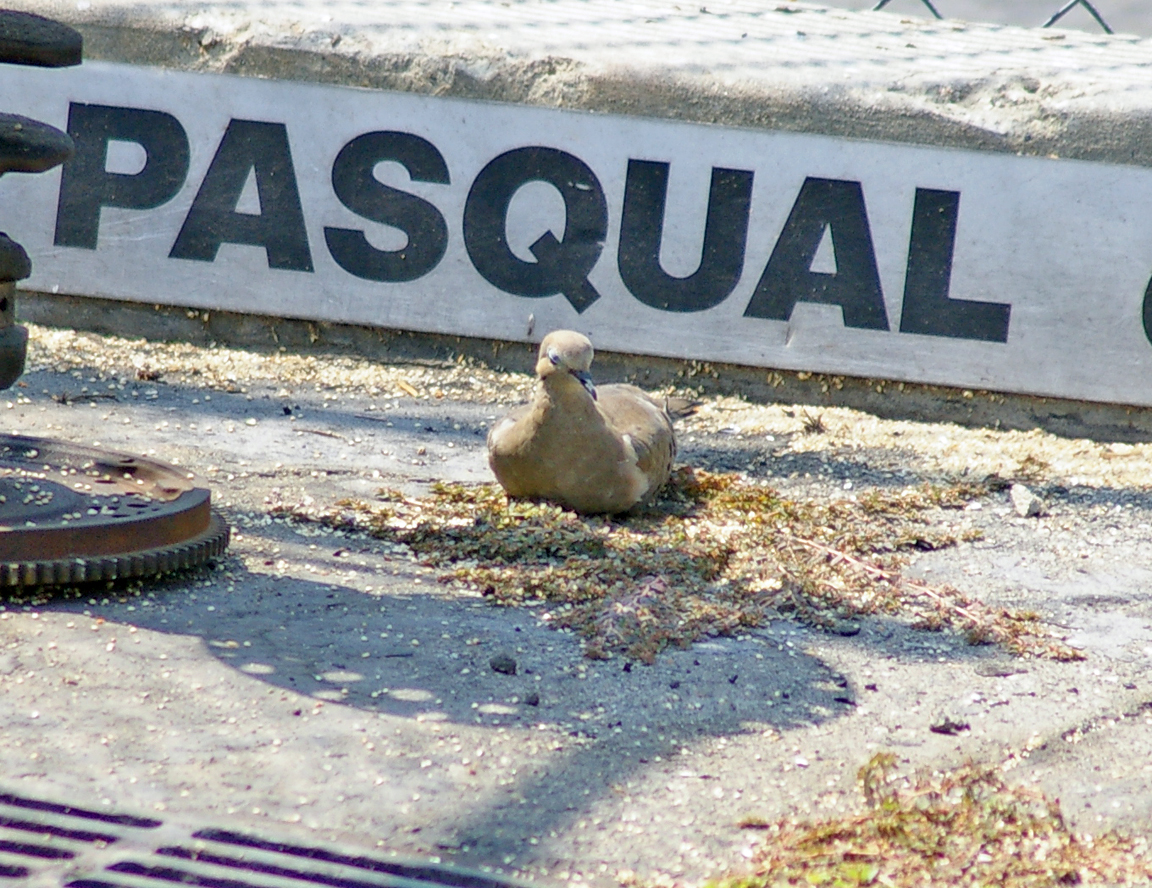|
|
|
 |
Mourning Dove
|
| Zenaida macroura | |
Abundant and widespread, the Mourning Dove is well known throughout most of North America. Its mournful call is heard from deserts to forest edges, from farmlands to inner cities.
Interesting Information
-
During nest-building, the female stays at the nest and the male collects sticks. He stands on her back to give her the nest material. She takes it and weaves it into the nest.
-
The Mourning Dove almost invariably lays two eggs. Clutches of three or four are the result of more than one female laying in the nest. A dove may have up to five or six clutches in a single year.
-
A Mourning Dove pair rarely leaves its eggs unattended. The male usually incubates from midmorning until late afternoon, and the female sits the rest of the day and night.
-
The Mourning Dove is the most widespread and abundant game bird in North America. Despite being hunted throughout most of its range, it remains among the 10 most abundant birds in the United States.
Description
Adult Description
-
Size: 23-34 cm (9-13 in)
-
Wingspan: 37-45 cm (15-18 in)
-
Weight: 86-170 g (3.04-6.0 ounces)
-
Medium-sized bird.
-
Small head.
-
Long, pointed tail.
-
Light brown body.
-
Tail with white outer edges.
Back grayish brown. Underside buffy. Black spots on wings. Black comma-shaped spot below and behind eye. Tail graduated, with inner feathers longest. Tail gray, with white tips bordered by black on outermost feathers. Bill small and thin, black. Legs and feet dull red. Eyes dark brown, surrounded by blue skin. Wings make whistling noise in flight.
Sex Differences
Sexes similar, but males slightly larger and slightly more colorful, with bluish crown and pink chest.
Male
Bluish gray cap and nape. Pinkish rosy hue over face, throat, and breast. Neck feathers tinged with pink iridescence. Outer three tail feathers with white.
Female
Olive gray cap
and nape. Face and throat olive brown. Breast
tan. Neck feathers tinged with olive green
iridescence; sometimes with pink. Outer one or
two feathers with white.
Immature Juvenile
grayish brown with light scaly edges to
feathers. Tail shorter and more square.
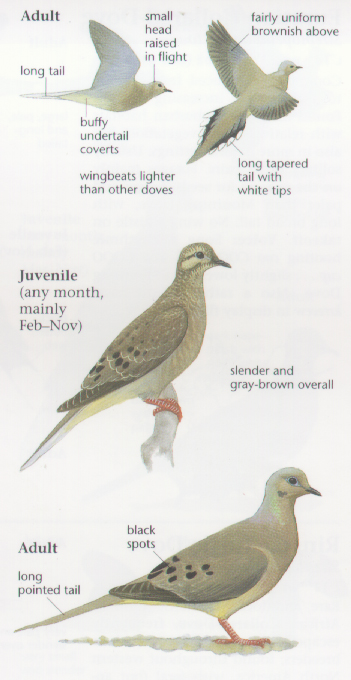
Photo taken from: The Sibley Field Guide by David Allen Sibley
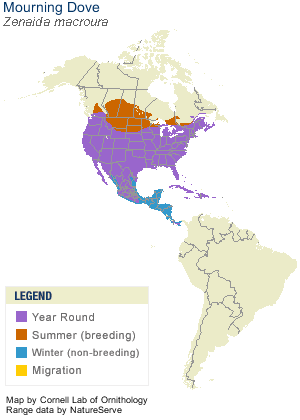
© 2003 Cornell Lab of Ornithology
|
Habitat |
|
Breeds in variety of open habitats, including agricultural areas, open woods, deserts, forest edges, cities and suburbs. |
|
Behavior |
|
Feeds mostly on ground, especially on relatively bare ground. Feeds in pairs or flocks. |
|
Food |
|
Seeds. |
Taxonomy
| Kingdom: | Animalia |
| Phylum: | Chordata |
| Subphylum: | Vertebrata |
| Class: | Aves |
| Order: | Columbiformes |
| Family: | Columbidae |
| Subfamily: | Columbinae |
| Genus: | Zenaida |
| Species: | Zenaida macroura |
| Subspecies: | Zenaida macroura carolinensis |
| Zenaida macroura clarionensis | |
| Zenaida macroura macroura | |
| Zenaida macroura marginella | |
| Zenaida macroura turturilla |
Similar Species |
|
|
Bird Sound |
|
Song a plaintive “coo-OOH, Ooo-Ooo-Ooo”. Wings whistle in flight. |
|
Eggs look like this |
|
Photo taken from: ARCTOS Collaborative Collection Management Solution |
